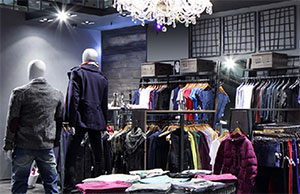 Although advanced video surveillance is fast becoming standard in industries ranging from education and healthcare to utilities and transportation, one market where highly sophisticated platforms are seeing strong adoption is retail. Not only do “brick and mortar” (physical) retail locations require a safe shopping environment, but merchants are realizing they can do much more with their surveillance footage than merely uncover employee problems or identify criminals.
Although advanced video surveillance is fast becoming standard in industries ranging from education and healthcare to utilities and transportation, one market where highly sophisticated platforms are seeing strong adoption is retail. Not only do “brick and mortar” (physical) retail locations require a safe shopping environment, but merchants are realizing they can do much more with their surveillance footage than merely uncover employee problems or identify criminals.
With the help of advanced, often 360-degree cameras, small retailers, big-box stores, and even shopping malls are using advanced video analytics to reduce employee theft, identify store layout impediments, track inventory and more. The solutions vary widely in functionality, and they go by a variety of names, including video management systems, data analytics platforms and video surveillance management software. For the sake of simplicity, we will refer to the group collectively as video information management.
There often are no clear lines that separate these product categories, although none provide exact duplication of features. All wish to appeal to the largest possible market, even as they want their individual strengths to stand out.
One Size Does Not Fit All
The challenge, then, becomes finding the right solution that meets the specific needs of a project, store or retail enterprise. At LMI we work with local retail chains of 10 stores as well as large, multi-national retailers with hundreds of locations. For all of these organizations, their level of technological sophistication, budget, and even personnel capacity to manage and utilize system output can vary significantly from one company to another. Desired functions can also change from one location to the next—even within the same enterprise—based upon crime statistics, neighborhood demographics, proximity to a college or other major institution, and other variables. Some firms know exactly what they want, while others need help considering their options.
Companies like LMI that design, install and configure camera and video systems must take all of these factors into account in their final proposals. They also must help develop a support and service plan, because most retail firms do not maintain in-house video monitor and camera technicians—and don’t want to do so in the future.
Having this assistance in the planning, execution and maintenance of a solution helps companies reap maximum ROI from the solution. It also enables them to pinpoint the features that are most important. For software in particular, these can be as basic as having an automated text alert sent when the system detects motion in a closed store, or the functions can be much more sophisticated, with business analytics that literally drive marketing programs.
Advanced features that these platforms can potentially provide include:
Logistics: Integration with RFID and POS systems, equipping retailers with formidable investigative tools to track merchandise from shipping to delivery through sale.
Loss Prevention: Integration with and analytics of point of sales systems to help identify theft, even as it occurs.
Sales/Marketing Optimization: Analyzing store traffic, merchandise placement, and consumer behavior, often with sales data integration, to optimize the consumer experience and boost sales and traffic flow.
Enhanced Safety and Reduced Liability: Video surveillance platforms are proven to deter illegal behavior, and some can be tied into local authority networks to reduce incident response times. Advanced photo analytics can help clarify detail in a camera’s night shots beyond the capabilities of the camera. Finally, some of these systems also provide evidence that mitigates liability in slip and fall cases and misconduct events.
LMI partners with a number of video information management providers, including ONSSI, 360iQ, Envysion and ExactQ. For more information, please give us a call at (770) 491-0343 or send an email to info@lmisystemsinc.com.
